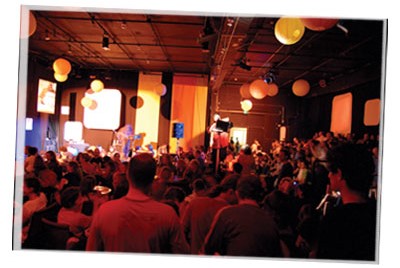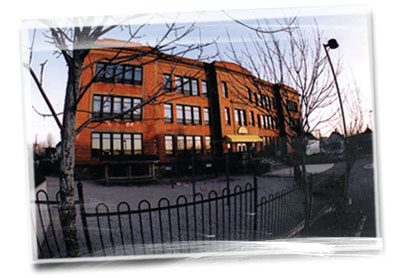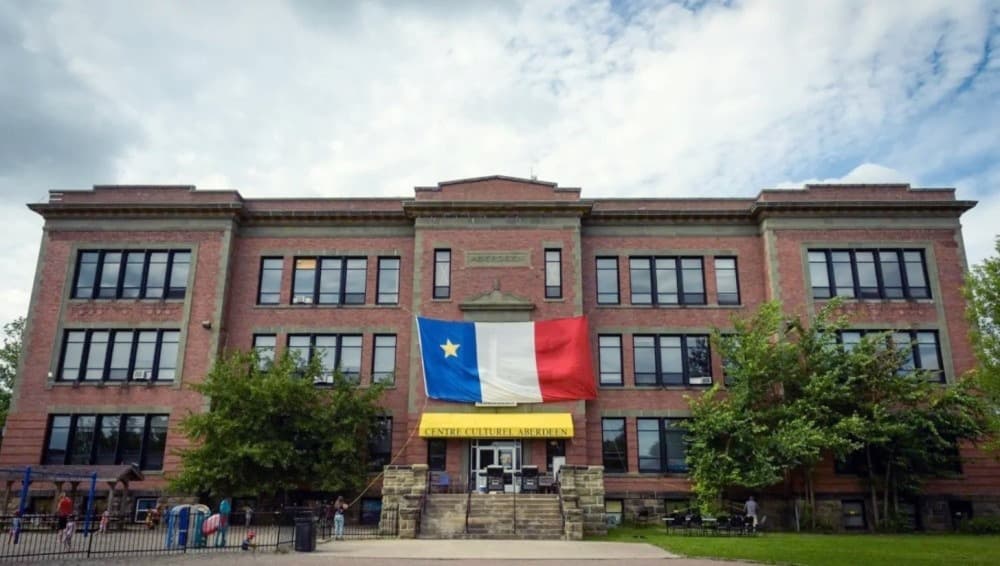Aberdeen Cultural Centre, built in 1916, long housed Moncton’s first secondary school. When the Aberdeen School – alma mater of Northrop Frye, world-renowned author and literary critic – closed its doors in the late 1970s, it was about to take on a new vocation.
Over the years, the Centre has made a name for itself, particularly through its role in the development of the visual and multimedia arts. Although the Aberdeen Cultural Centre remains conscious and respectful of the community’s history and cultural heritage, it is equally dedicated to working toward a contemporary vision of Acadie. This has created a dynamic cultural environment that allows the artists of New Brunswick and Acadie to express themselves freely in a fresh and contemporary way.

The building that now houses the Centre was constructed in 1898 and originally served as Moncton’s first secondary school, known as Aberdeen High School. The school was named for the then Governor General Lord Aberdeen, who laid the cornerstone of the edifice shortly before its completion.
The building was reconstructed following a terrible fire in 1916 and remained a functioning high school for decades thereafter. Following the school’s gradual decline during the 1970’s, this alma mater of the late-lamented Northrop Frye underwent a dramatic transformation.
After the province eventually decommissioned the school, a group of artists in the community began installing their studios and offices in the building. They shared the space with a daycare facility that is still in operation today, providing numerous children with the advantage of being in an environment that is supportive of the arts and culture. In 1986, the occupants decided to create a cooperative organization by the name of Aberdeen Cultural Centre. They eventually acquired the school from the province and set out to restore it.
Remodelled in its new vocation, the Aberdeen Cultural Centre building is home to some twenty organizations that are active in arts, culture and education. Among the regular members of the co-op, several arts and culture professionals, as well as businesses, have garnered recognition at the local, national and international levels.
The school’s former auditorium usually referred to as the grande salle, has long since been a cornerstone of the Centre. This multifunctional hall has a unique and distinctive character that is widely appreciated among artists. It was managed and used as a venue by the Théâtre l’Escaouette for over a decade.
In addition to the many theatre productions that were developed and presented in this performance space, members of the co-operative and many friends of the Centre have used it as a springboard for numerous productions, right up to the present. Whether through dance and visual arts events, staged productions in literature, drama, music, cinema, or receptions related to arts and culture, the grande salle has always served the arts community and the general public. Since the departure of Théâtre l’Escaouette in May 2004, management of the grande salle has been reverted back to the Centre culturel Aberdeen. The Centre has worked to fully revitalize this multifunctional space as a venue for the artistic expression of a modern and contemporary culture.

In 1999, as part of the Sommet de la Francophonie held in Moncton, the Aberdeen Garden was developed in front of the building as an “Art Park”. This green space contains public art and is also an enhancement to the quality of life in the entire neighbourhood.
Today the Aberdeen Cultural Centre represents one of the most important parts of the cultural infrastructure of New Brunswick and Acadie in Atlantic Canada. Every day, hundreds of individuals, including cultural workers, artists, visitors and children of all ages come together in a creative place where an appreciation for the arts is shared by all. The Centre continues to encourage regional artists and experiment with emerging trends in artistic expression and remains an indispensable foundation for the cultural life of Moncton and the region.

